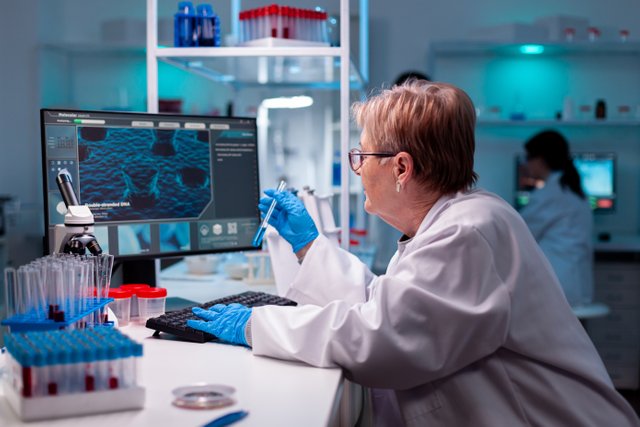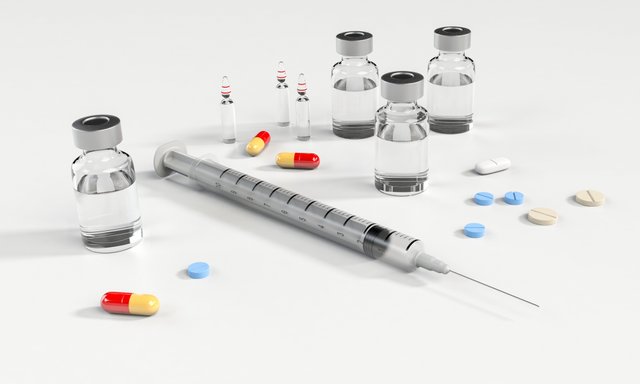The Future of Healthcare and Technology (Part 1)
As we all know, technology is nothing new to healthcare; it has been driving innovation and cost savings for years. From radiology to tele-medicine, the effect on healthcare in the last decade has been significant. Digital health technologies have impacted inpatient revenue growth, physician visits and medical costs.

Why traditional healthcare is changing?
Traditional healthcare has changed because of technology, especially information technology. Information and communication technologies make it easier to access healthcare services, improving efficiency and access. But they also enable new problems, such as the ability to share information between providers that used to be kept secret in the past. Technology can also create issues by assisting with fraud (phone verification or logging into electronic medical records), improving the ability of patients to self-diagnose, losing the trust between doctors and their patients because of misused or dishonest information technology at a doctor's practice, and other issues that have arisen from the use of technology in medicine.
The traditional methods of healthcare have been changing since the invention of the internet.
In general, one of the largest drivers for change is economic: if new technology can help a provider or patient spend less money managing their care, they are likely to adopt it. Without sticking to old models that are more expensive than newer models, healthcare systems may find themselves unable to afford the care they provide. As physicians have moved from paper to electronic medical records, for example, they have found that they can deliver more efficient patient care and spend less time at work.
The importance of healthcare IT technology
The World Health Organization (WHO) definition of medicine is "an art, a science, an industry and a service." IT allows the communication between healthcare providers, patients, and administrators. It enables the delivery of great care to people with specific medical needs.
IT has had two key changes:
The incredible rise in electronic medical records. For the first
time in history, healthcare providers can access records of all
patients that they have treated.The use of information technology to improve medical care and reduce
costs.
The first use of IT was in the 1970s and 1980s, with electronic health records being used in the 1990s. Since then, such progress has been made that even larger numbers of people are being served and lives are being saved by IT-enabled healthcare technology. Examples include: Anesthesia monitoring equipment (which monitors breathing signals and delivers medications automatically). The WebMD website was launched in 1996, allowing patients to access their own medical information quickly.
The future of healthcare technology will be data-driven. We’re moving from a world where doctors and insurance companies decide what is best for you, to a world where you will have the data and can decide what is best for you. Data is the engine.
Using data to give you the right information at the right time will make it easier to make informed choices, based on external factors such as your health needs and other factors. It will also help you decide what is best for you because of your preferences, and enable you to take decisions best suited for your circumstances.
Capitalizing on technology trends that have influenced the health care industry since its inception—such as Moore’s Law (electronics advance at an exponential rate), multiple technological phenomena such as mobility, IoT, and big data—will help organizations evolve as providers and enhance the patient experience. Furthermore, it will allow for more sophisticated decision-making and ultimately better patient outcomes.
The Internet of Things (IoT) is a network of electronic devices, which are embedded with sensors and connected to the internet. These IoT devices send and receive data between them, facilitating more efficient and secure data collection. With an increase in the amount of patient data created by IoT technologies such as wearables, the future of healthcare lies in data analysis—bringing more value to care providers while improving patient outcomes—which will impact how organizations interact with each other both at home and in hospital settings.
In past years, this sector has performed many more engagements with healthcare technology companies around innovation and collaboration. The purpose of these engagements has been to explore opportunities in new and innovative markets and conversations on how to make healthcare technology a more pervasive part of the American lifestyle.
The majority of consumers are embracing digital health technologies at an exponential rate as a way to improve their overall health and wellness while reducing costs - the classic American dream. We’re seeing more than 70 million global consumers — or 21% of consumers — participating in some form of digital health technology program today; that number is expected to reach 80 million by 2020 .
One common theme that we continue to see is that healthcare IT is no longer treated as a commodity, but rather as an equal player in the decision-making process. As providers look for ways to better engage patients, they increasingly realize that consumerization is becoming just as important as digitalization.
The global healthcare market is expected to reach $8.7 trillion by 2026, with a compound annual growth rate (CAGR) of 6.6% from 2016 to 2026. Healthcare technology companies are at the forefront of innovation and are leading the charge when it comes to creating positive disruption in this industry through efficient, cost-effective solutions that improve lives and generate value for stakeholders.
In conclusion, healthcare is more than a business or environment, it is a necessity. The health of our nation’s residents depends on the evolution of healthcare technology, and it is imperative that we view healthcare as a service to deliver efficiency and value to the consumer. So, despite the many job losses, job cuts, and corporate outsourcing that have been occurring in the healthcare industry, it is critical that we remain focused on finding solutions to enhance patient care.
Sources:
How We Can Expect The Healthcare Industry to Change in The Future
Beurer ECG and pulse oximeter
Experts speculate on the future of healthcare IT
To be continued........
Hi , thank you for reading.
Achievement 1 : Hello Steem! This is my introduction! — Steemit


Nice to read your post .
Keep posting and stay with our community .
Thank you
You have been upvoted by @tarpan A Country Representative, we are voting with the Steemit Community Curator @steemcurator07 account to support the newcomers coming into steemit.
Follow @steemitblog for the latest update. You can also check out this link which provides the name of the existing community according to specialized subject
For general information about what is happening on Steem follow @steemitblog.
You have been selected for 500SP Minnow Support Program and will be supported by Booming Curation Support. For more details about this program please check this post 500SP Minnow Support Program for Newcomers(Revised Edition) updated on 24/5/2021
Don't forget to attach your Achievement 1 post link to every of your post published in this Steemit Nursery community.
Remember that you must publish by the Steemit Nursery community to be chosen, the publications must be of quality, own content and photographs at least 3. Do it well Greetings and blessings!
Hi @tanzim2 please always have an active post(less than 6 days of age) at Steemit Nursery for receiving the 500 SP support. See you around soon!